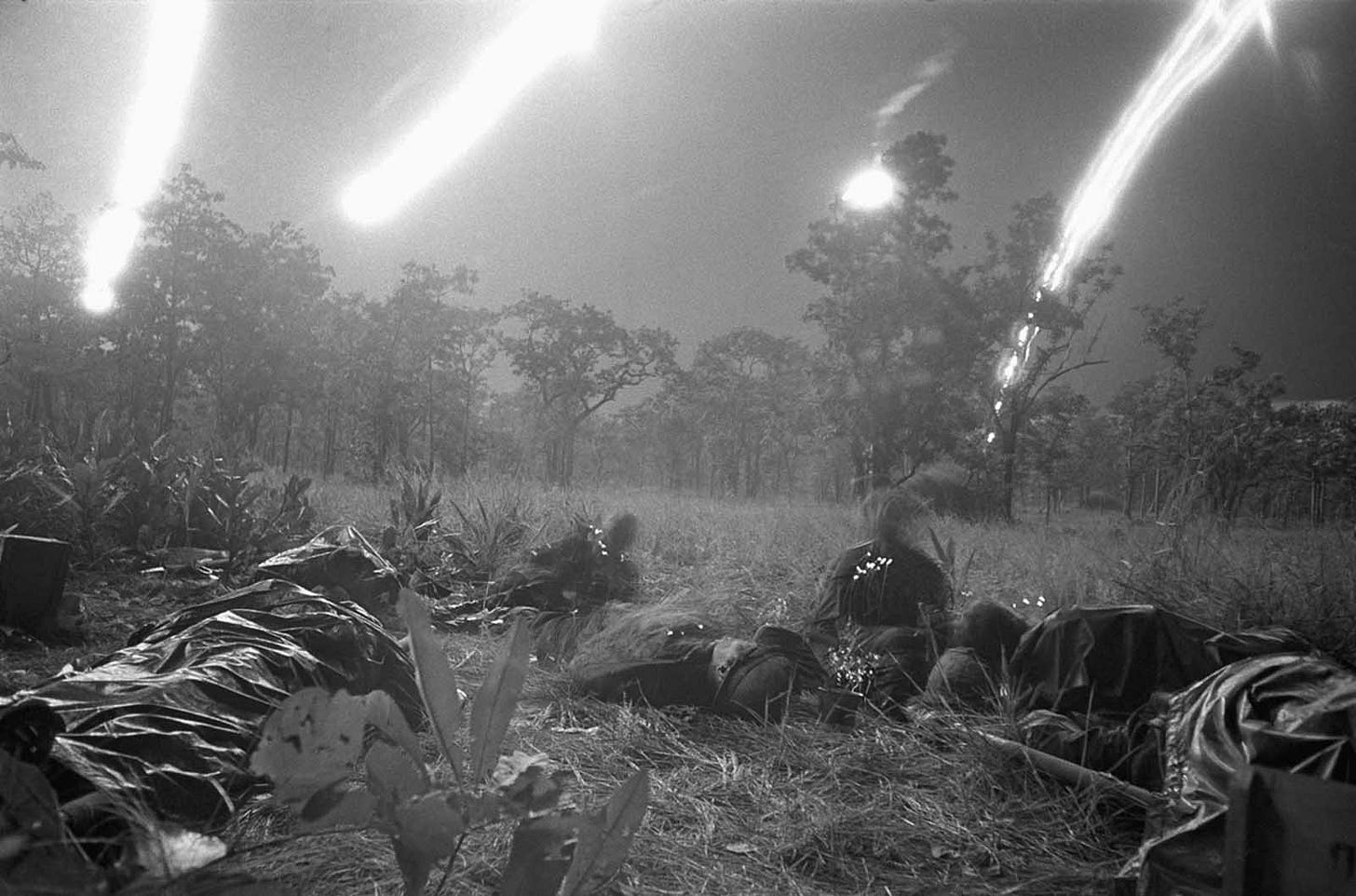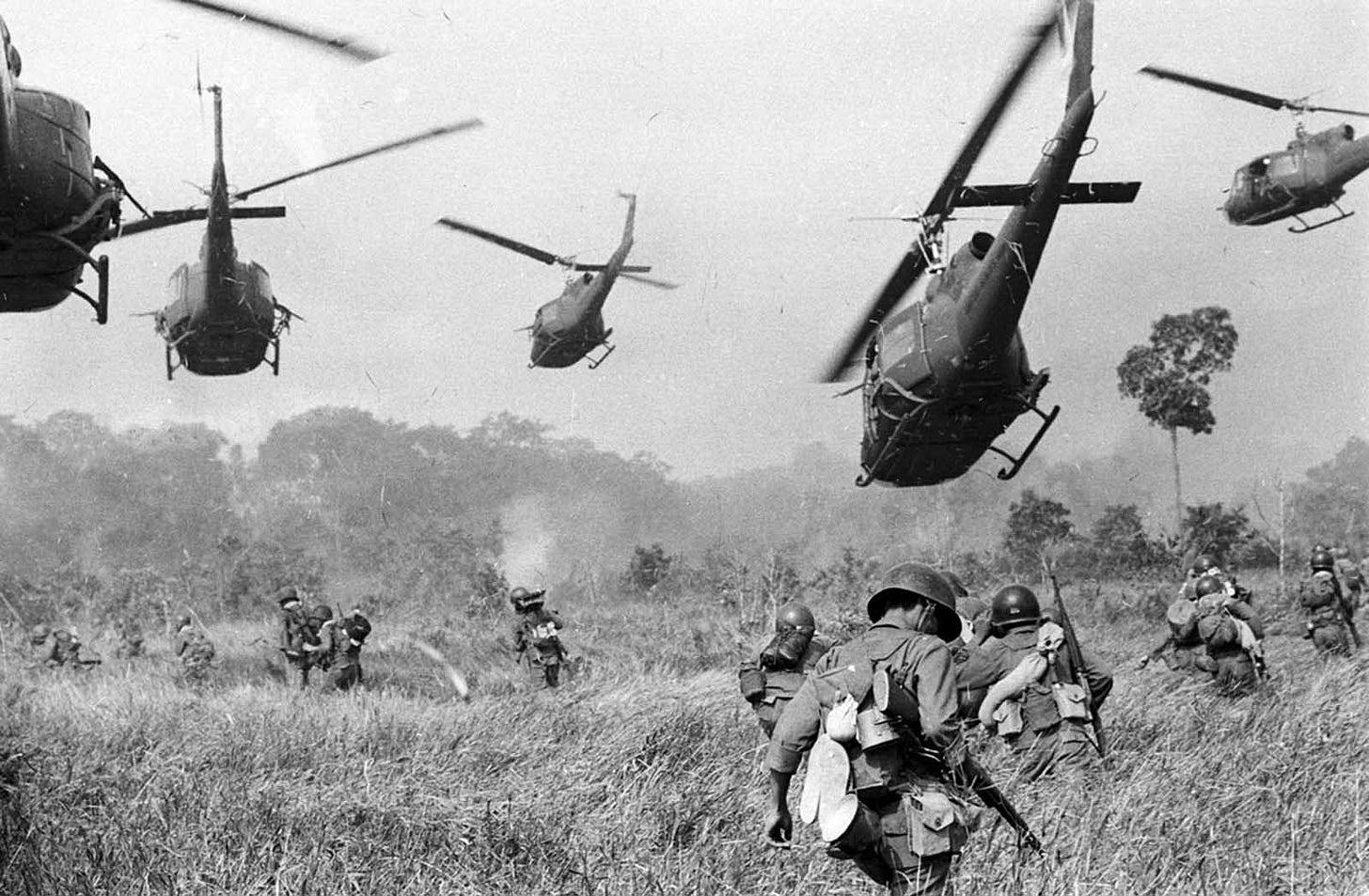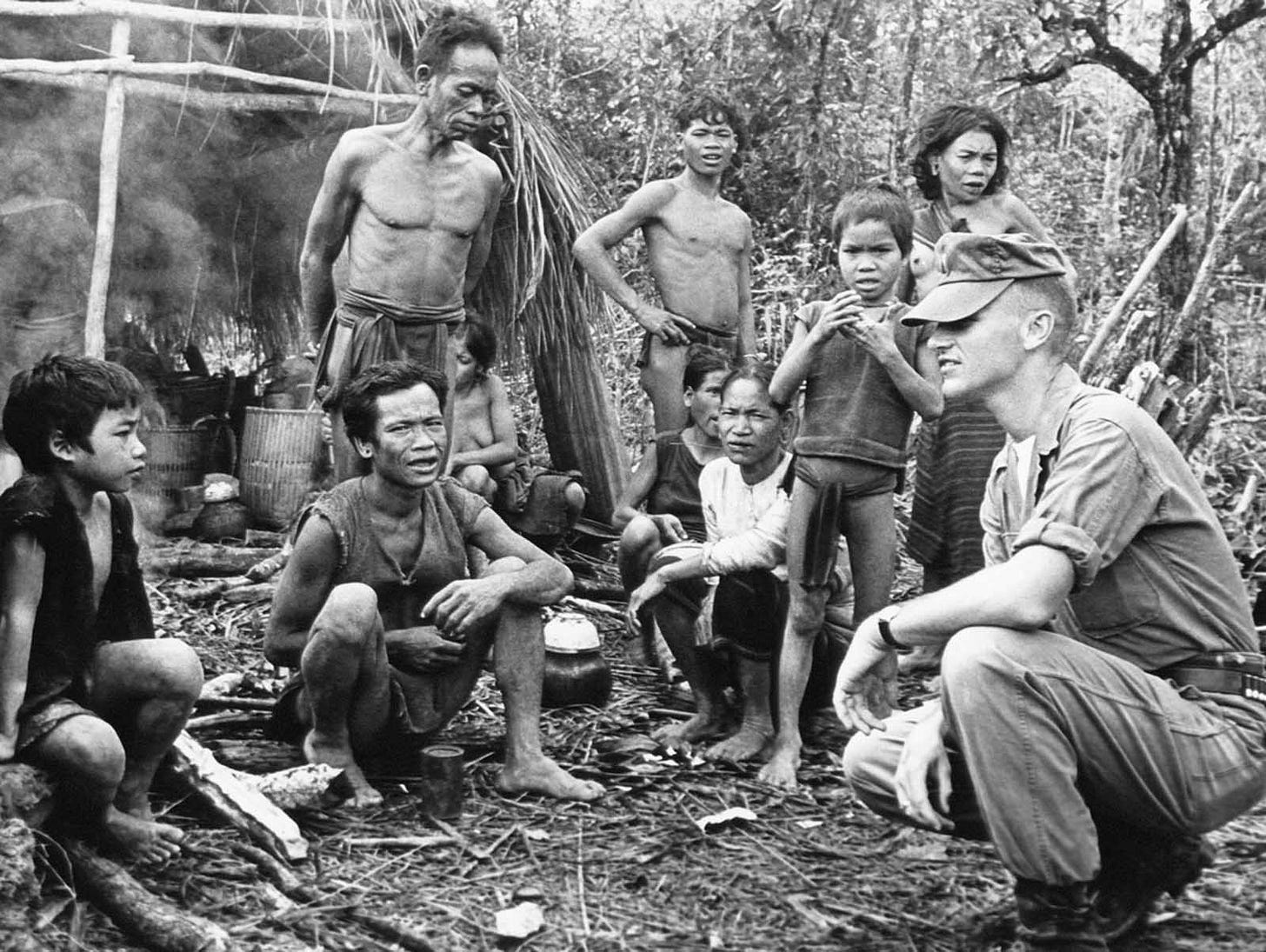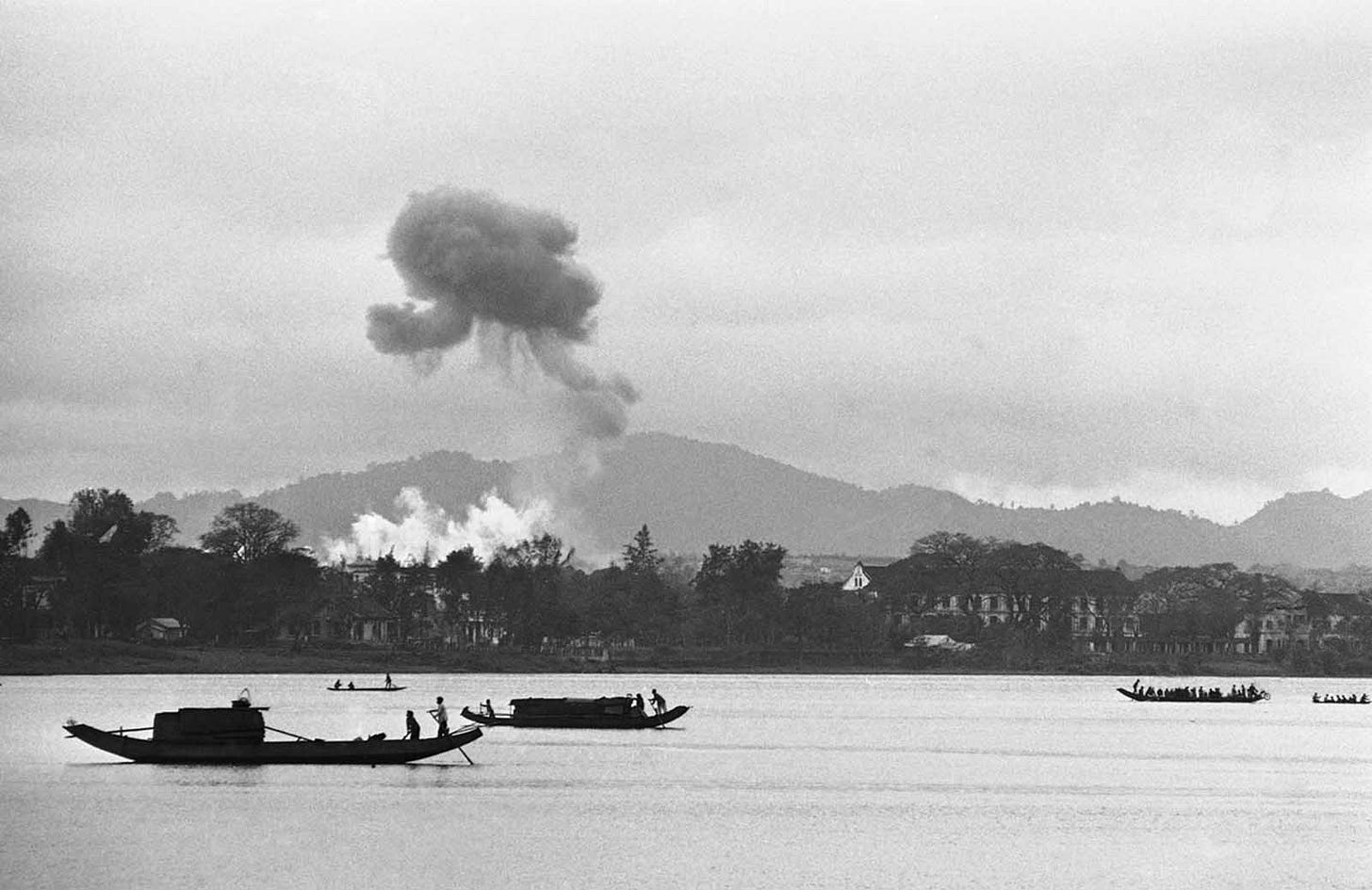Vietnam War's Genesis: Rare Photos (1965-67)
Viet Minh forces celebrate their victory at the Battle of Dien Bien Phu on May 7, 1954, a pivotal moment ending French involvement in Indochina and leading to the Geneva Conference.
Ngo Dinh Diem consolidates his power over South Vietnam by early 1955, establishing a contentious leadership that would shape the nation's future.
Vietnamese airborne rangers, supported by U.S. advisers and Special Forces, disembark from H-21 helicopters under sniper fire during a raid on a Viet Cong supply base northwest of Saigon, August 6, 1963.
A South Vietnamese Marine comforts his severely wounded comrade in a sugar-cane field at Duc Hoa, near Saigon, after a devastating Viet Cong ambush on August 5, 1963.
Napalm air strikes ignite the skies above a village near Hue on February 28, 1963, as houseboats navigate the Perfume River, illustrating the intense early conflict around the Imperial City.
Buddhist monk Thich Quang Duc's self-immolation on a Saigon street on June 11, 1963, a harrowing protest against the South Vietnamese government's alleged persecution of Buddhists under President Ngo Dinh Diem.
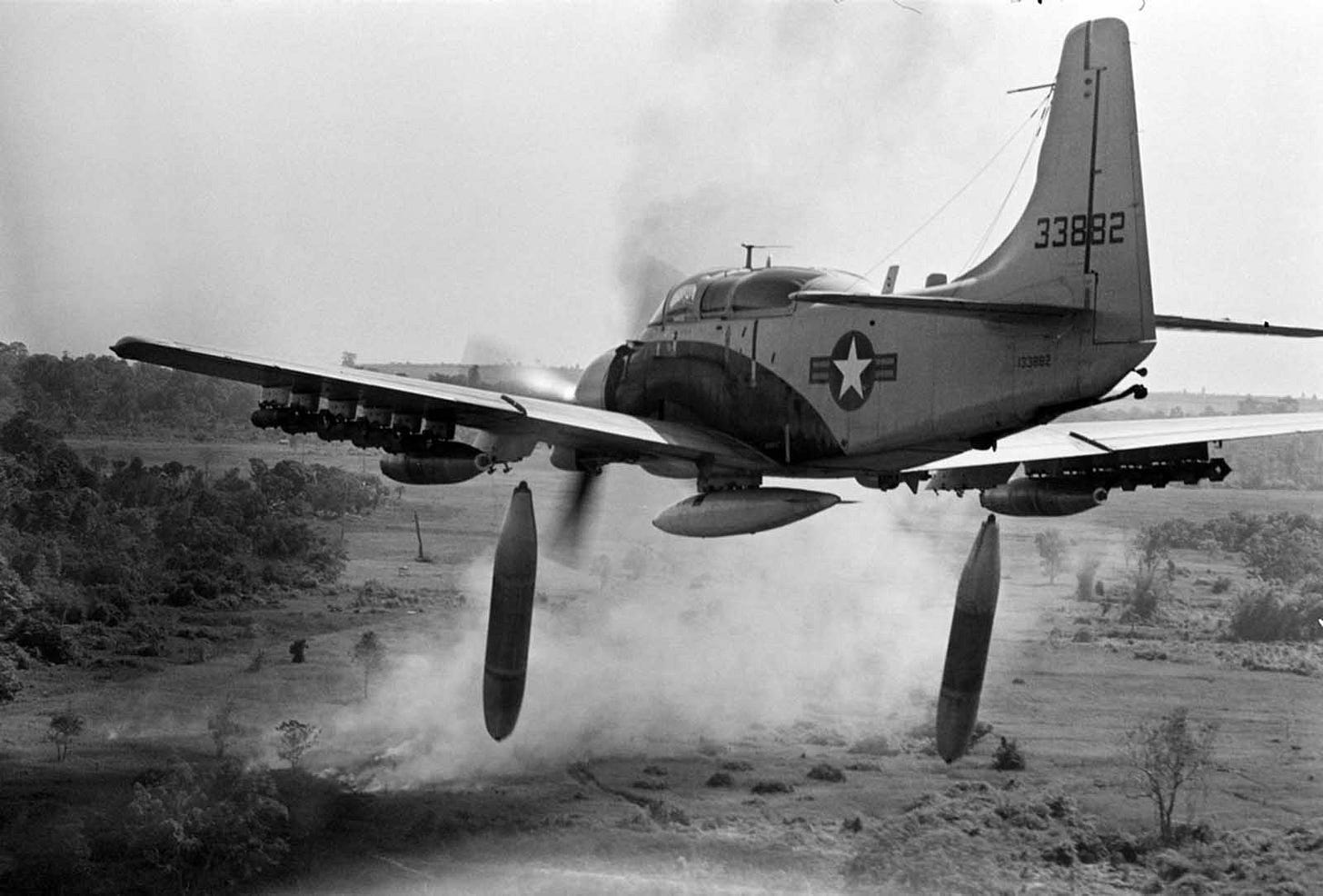
An A-1 Skyraider fighter-bomber unleashes 500-pound bombs on a Viet Cong position in the dense jungle, as smoke from an earlier strike billows, December 26, 1964.
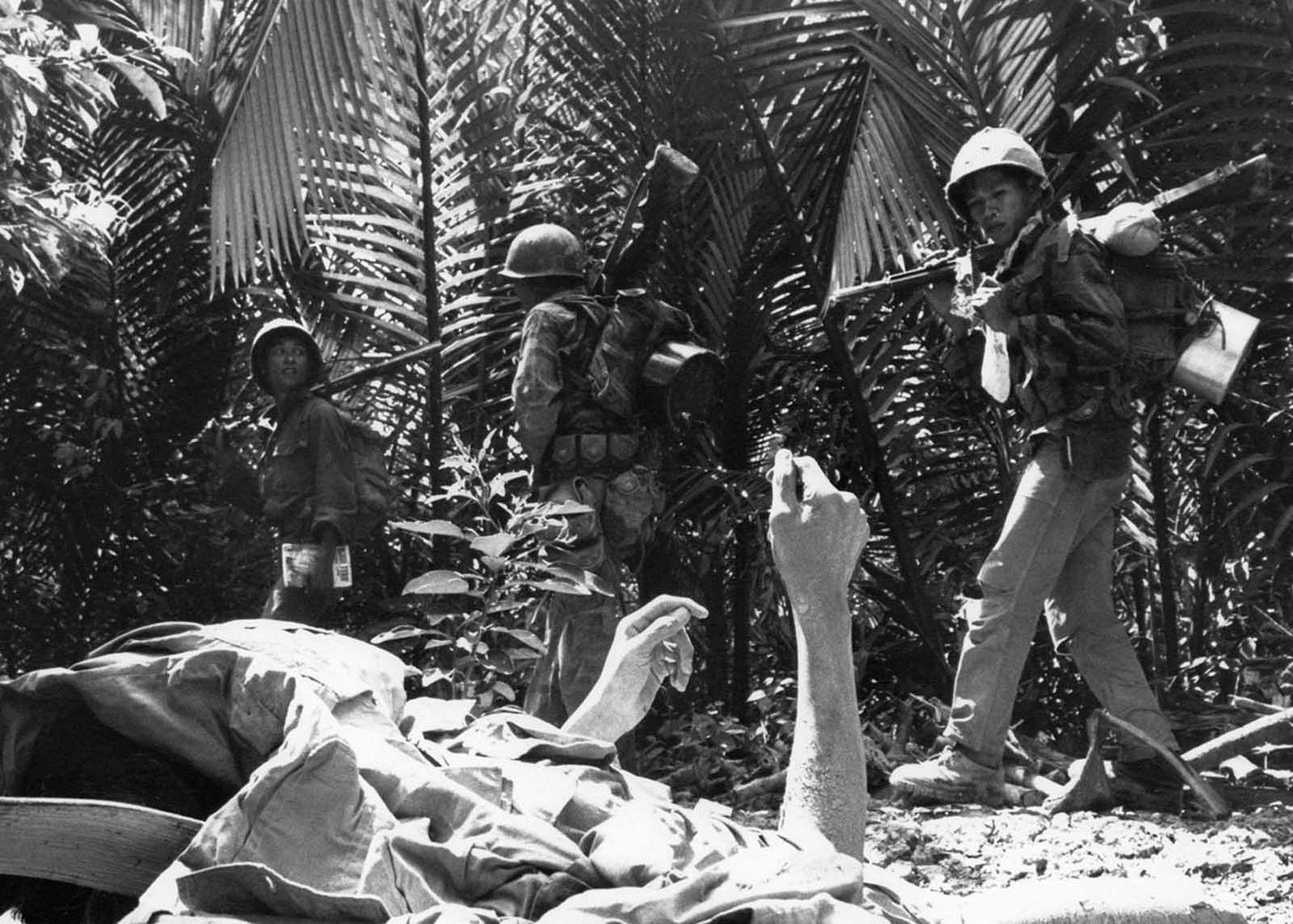
A dying Viet Cong guerrilla, partially covered, raises his hands as South Vietnamese Marines conduct a search operation in palm groves near Long Binh, Mekong Delta, February 27, 1964, following a fierce engagement.
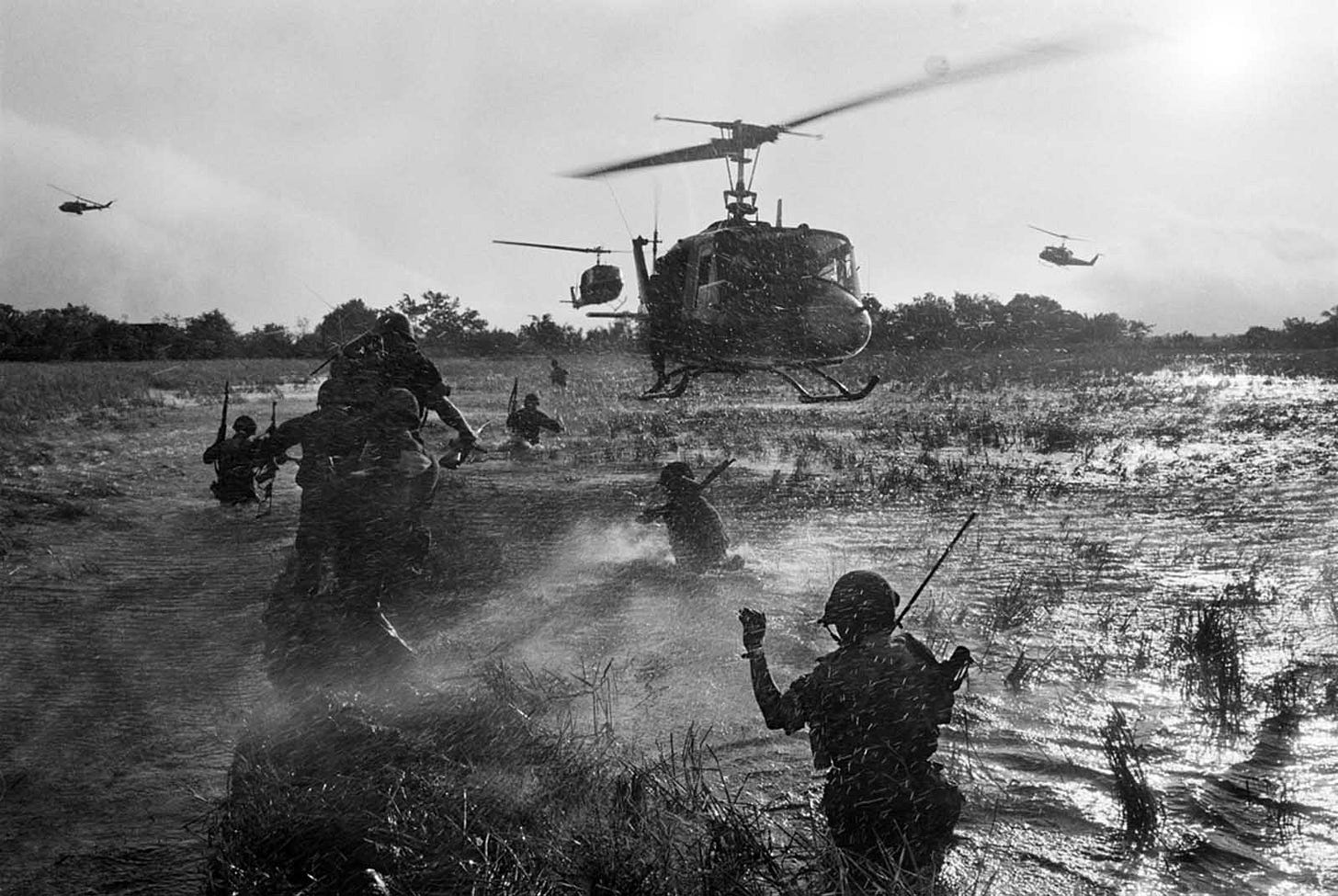
South Vietnamese troops navigate a flooded rice paddy in Long An province during an operation against Viet Cong guerrillas in the Mekong Delta, December 1964, supported by U.S. 'Eagle Flight' helicopters deploying airborne reinforcements.
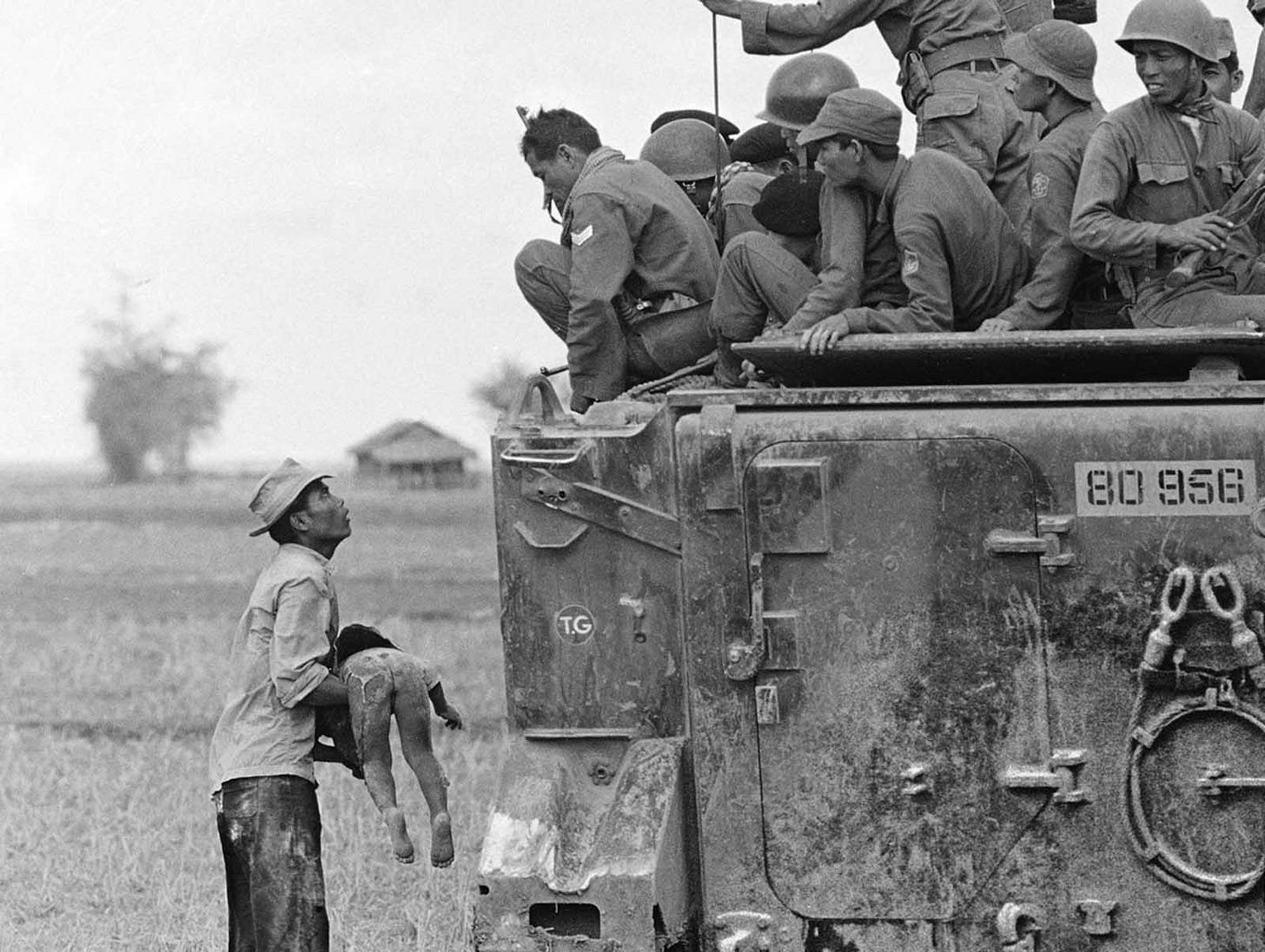
A distraught father cradles his deceased child, killed during a government forces' pursuit of guerrillas into a village near the Cambodian border, as South Vietnamese Army Rangers observe from their armored vehicle, March 19, 1964.
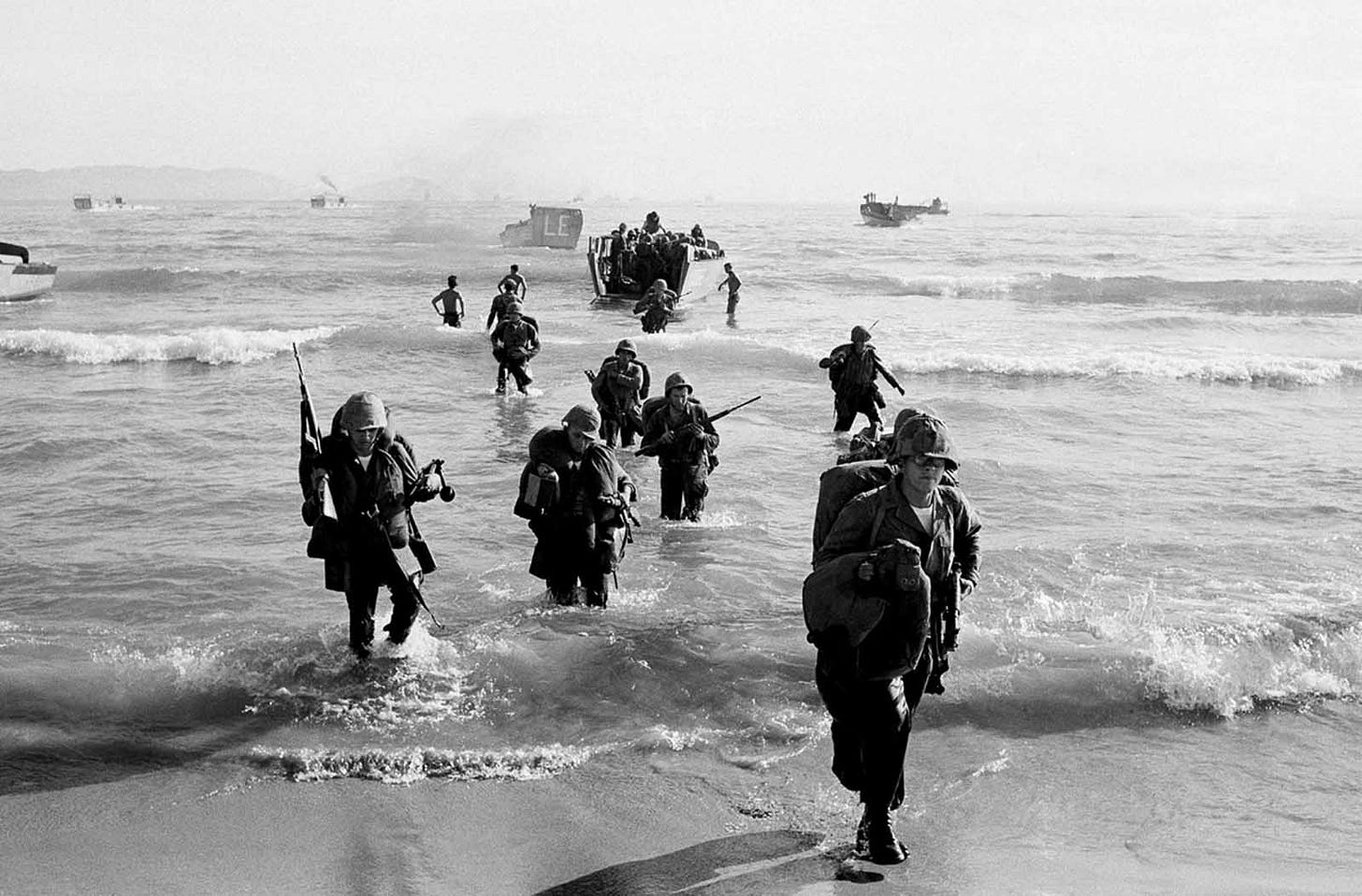
U.S. Marines, laden with heavy equipment, wade ashore at dawn on Red Beach near Da Nang, marking a significant early deployment of American ground combat troops in Vietnam, April 10, 1965.
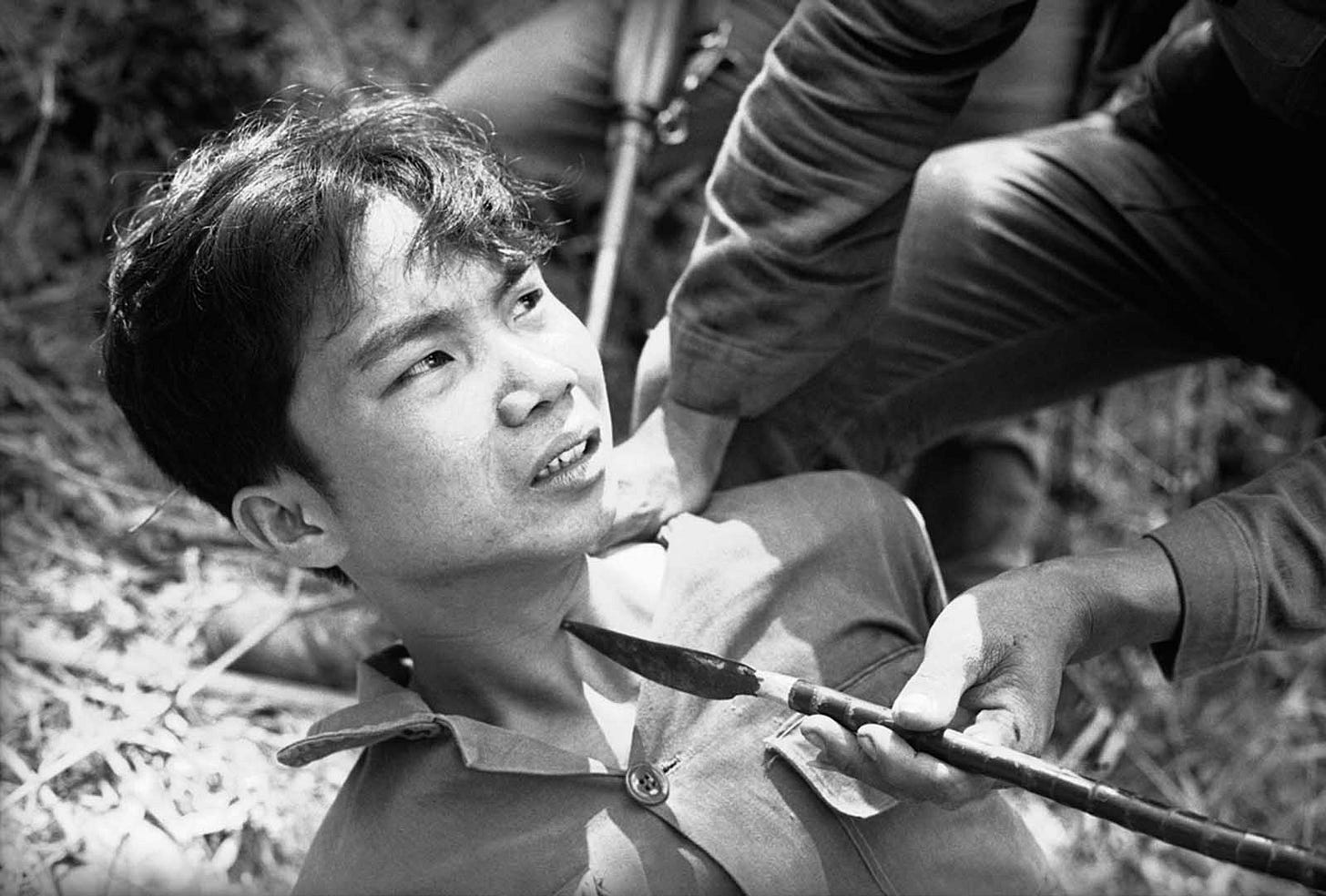
A captured Viet Cong guerrilla, under duress, reveals the location of a Chinese grenade cache to interrogators near Da Nang on March 28, 1965, following the capture of his unit by Vietnamese battalions.
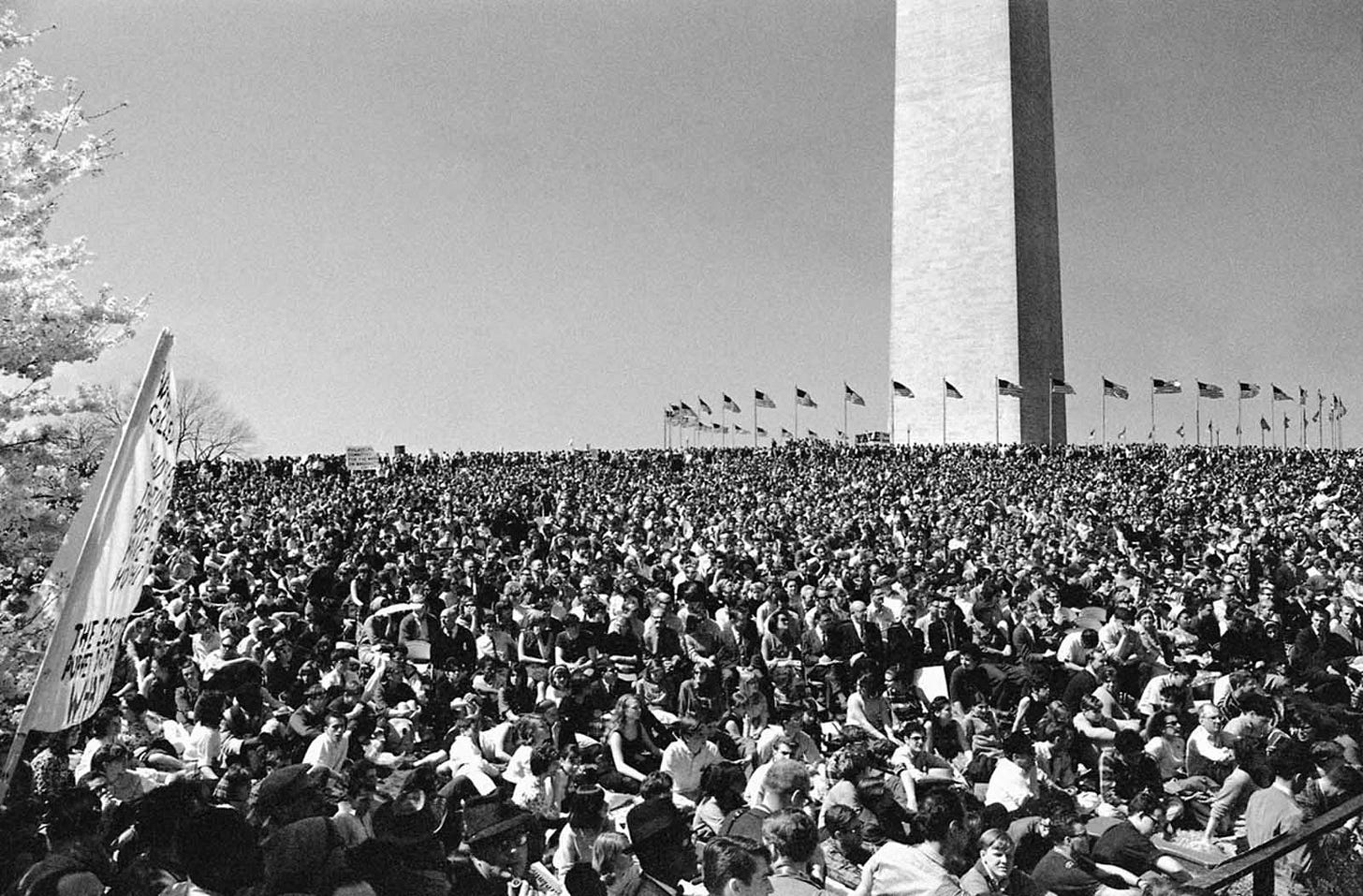
Thousands gather at the Washington Monument on April 17, 1965, for an anti-Vietnam War rally, protesting U.S. policy and demanding an end to the fighting, a burgeoning sign of public dissent.
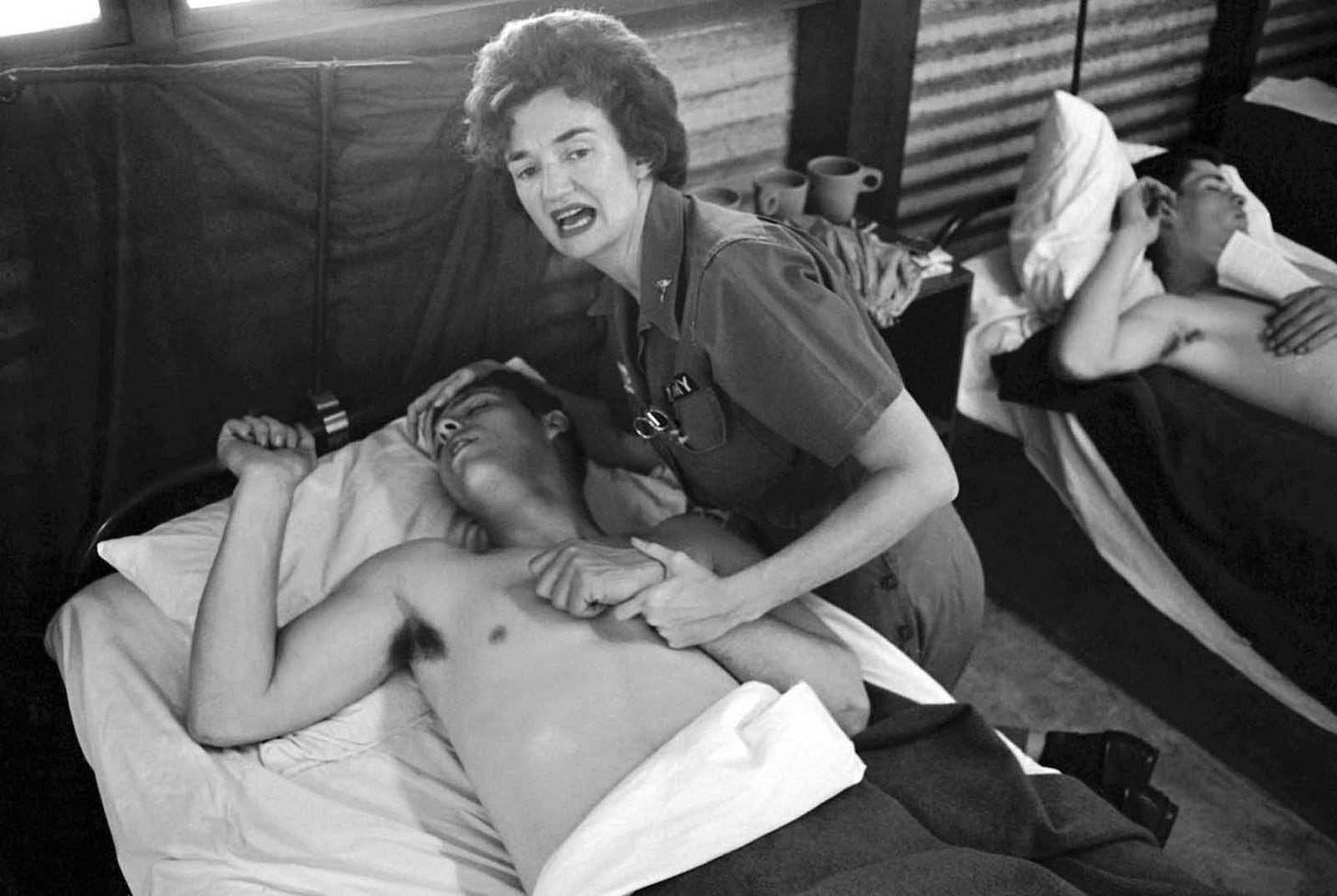
A nurse offers comfort to a wounded U.S. Army soldier at the 8th Army Hospital in Nha Trang, February 7, 1965, one of many casualties from Viet Cong attacks on U.S. military compounds at Pleiku.
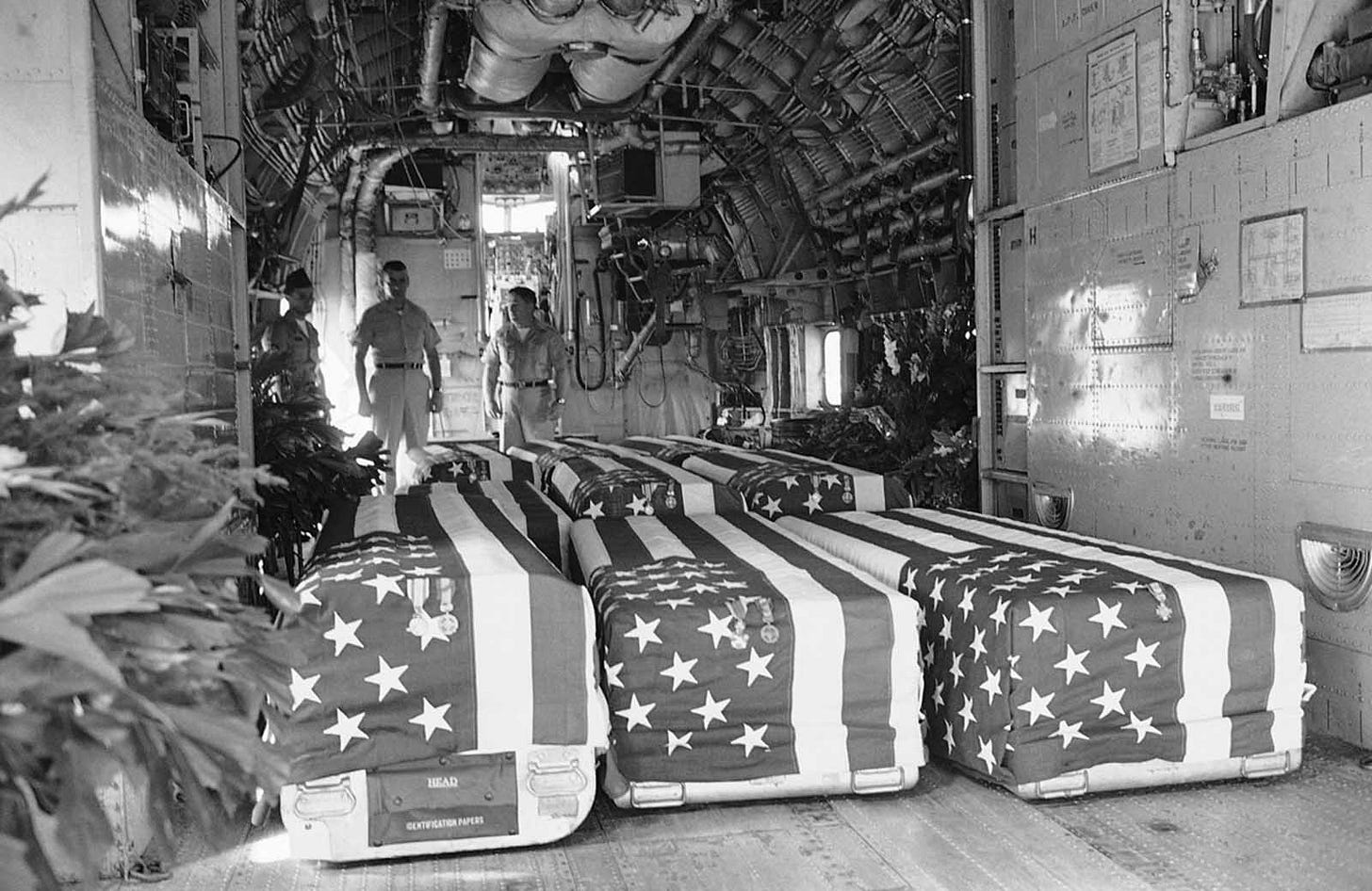
Flag-draped coffins carrying eight American servicemen, killed in Viet Cong attacks on February 7, 1965, are loaded onto a transport plane at Saigon for repatriation, a grim symbol of early U.S. losses.
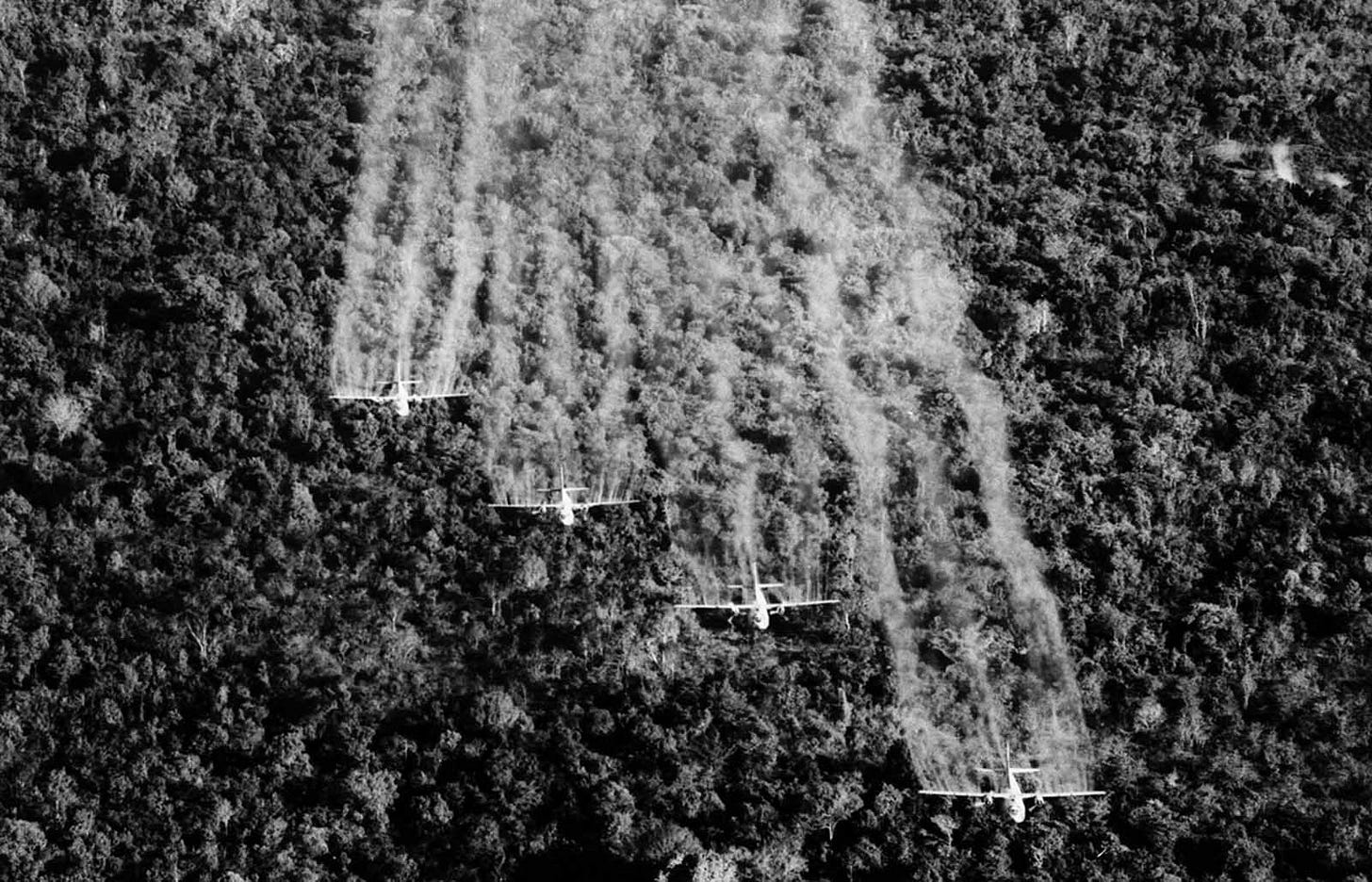
Four 'Ranch Hand' C-123 aircraft deploy liquid defoliant over a suspected Viet Cong position in South Vietnam, September 1965, part of controversial operations to clear dense jungle cover.

Captain Thach Quyen, a Vietnamese battalion commander, interrogates a captured Viet Cong suspect on Tan Dinh Island, Mekong Delta, in 1965, during a period of escalating conflict.
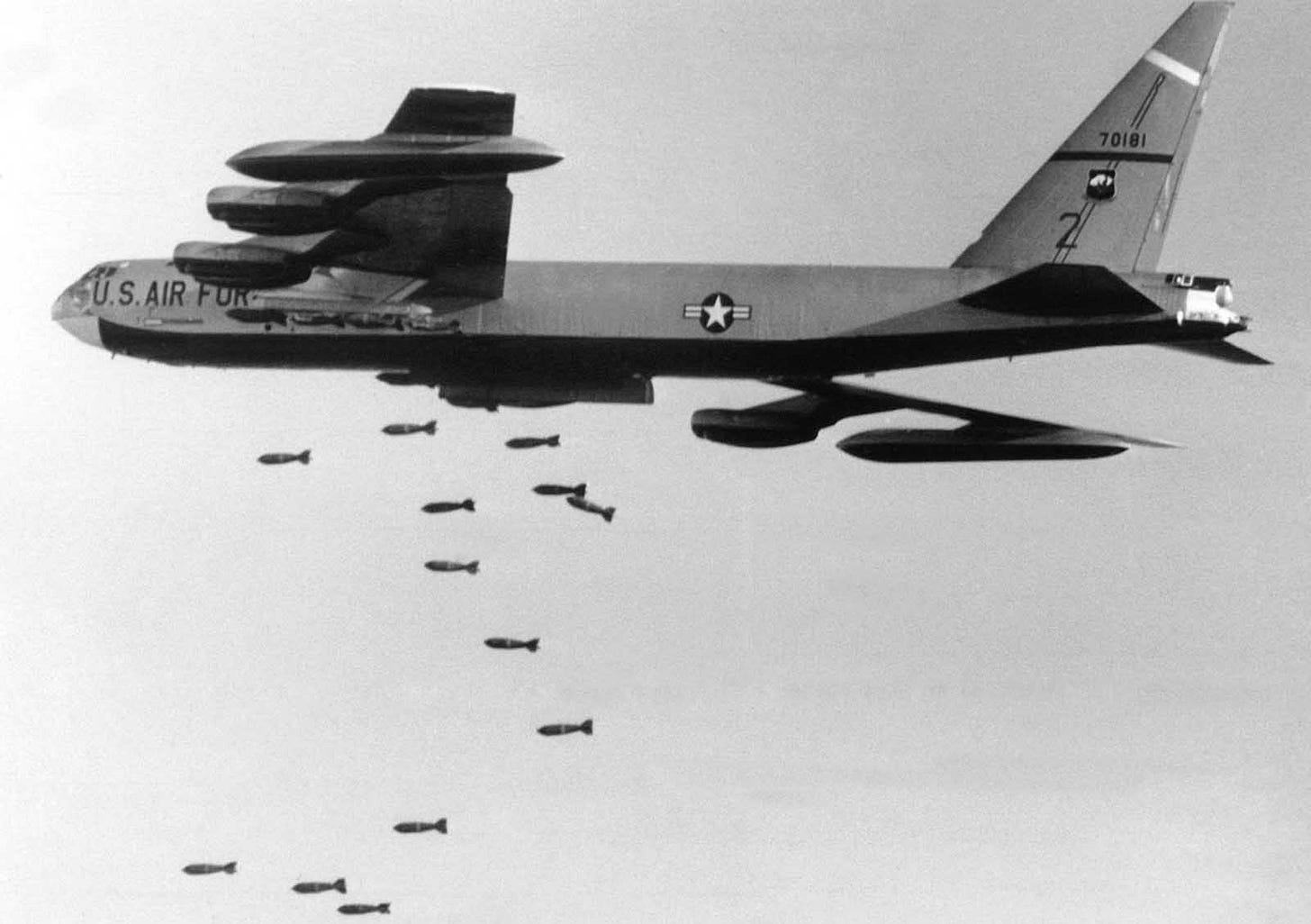
A Strategic Air Command B-52 bomber, laden with 750-pound bombs, on a bombing run towards a target northwest of Saigon near Tay Ninh, November 2, 1965, showcasing early aerial might.
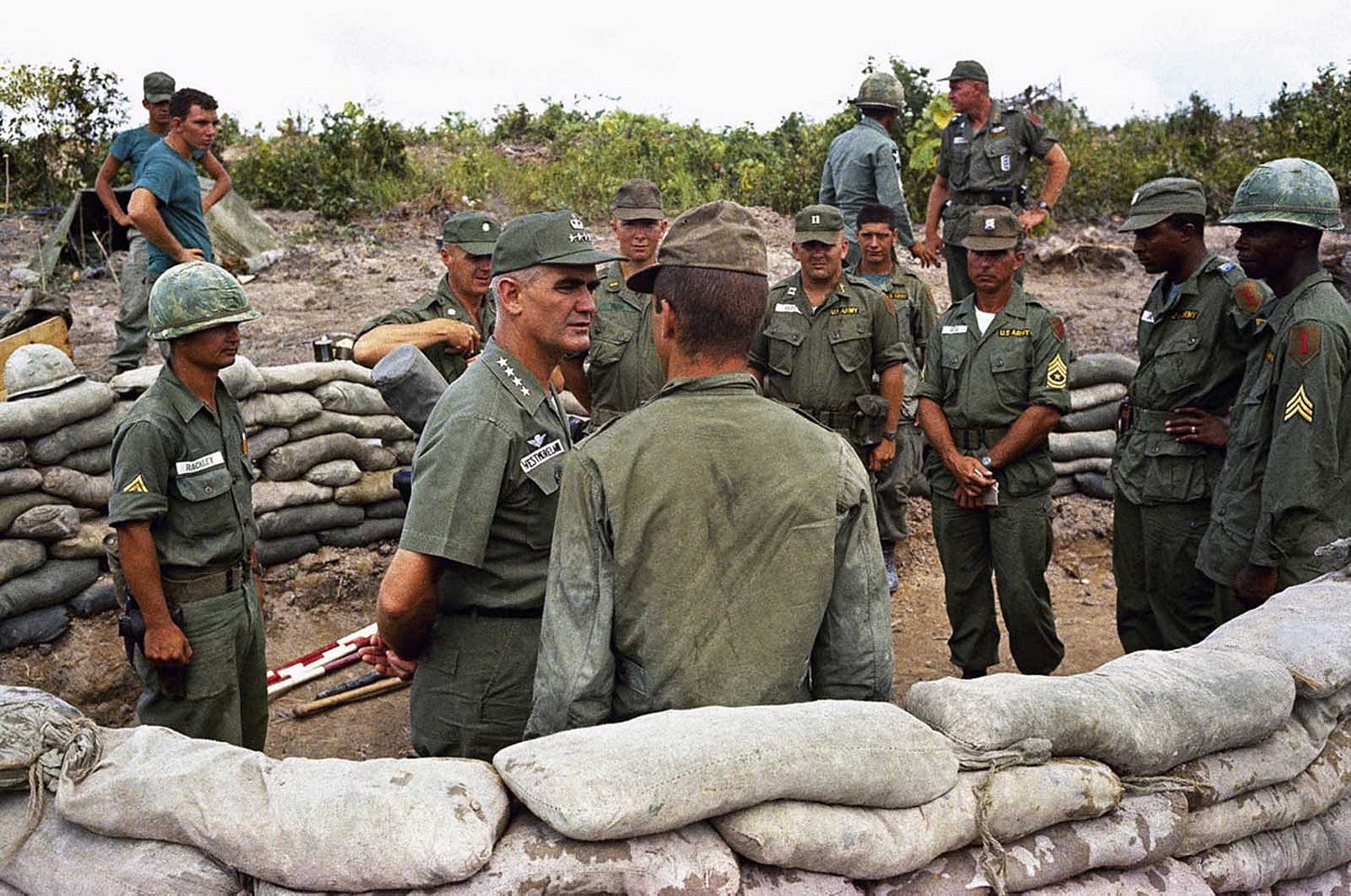
General William Westmoreland, commander of U.S. forces, converses with troops from the U.S. First Division near Bien Hoa, Vietnam, in 1965, during early stages of American ground engagement.
